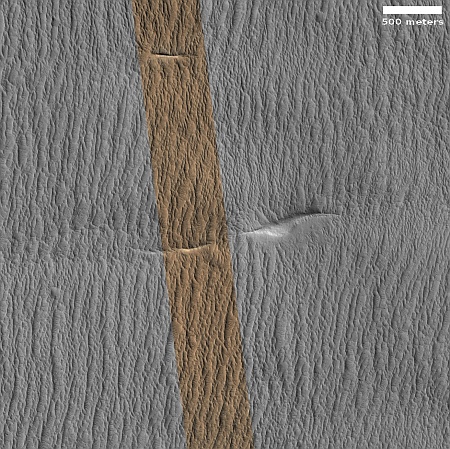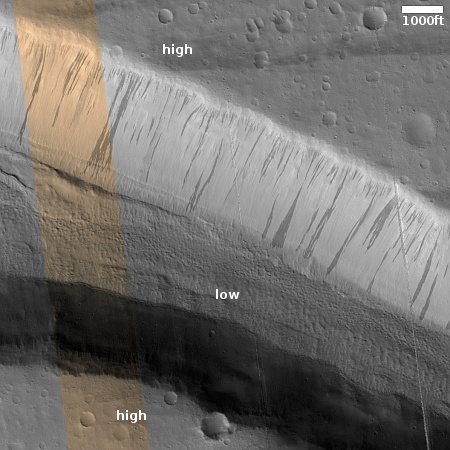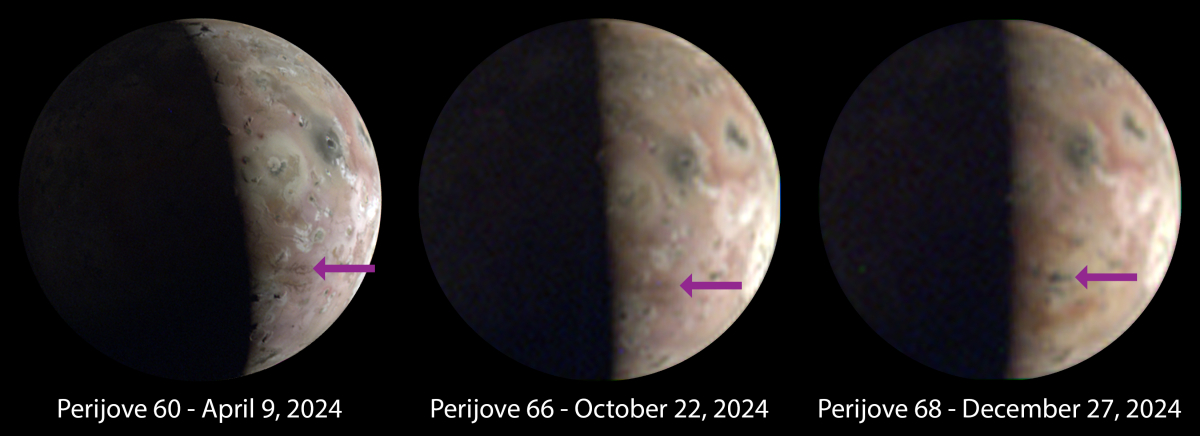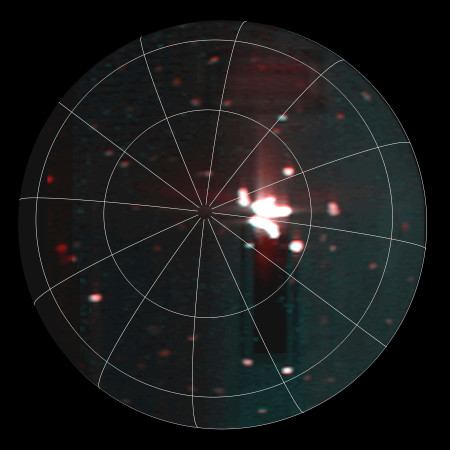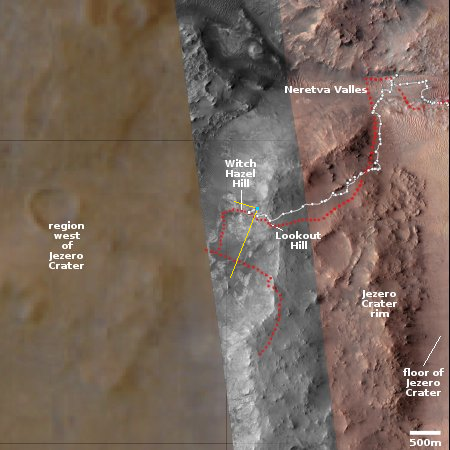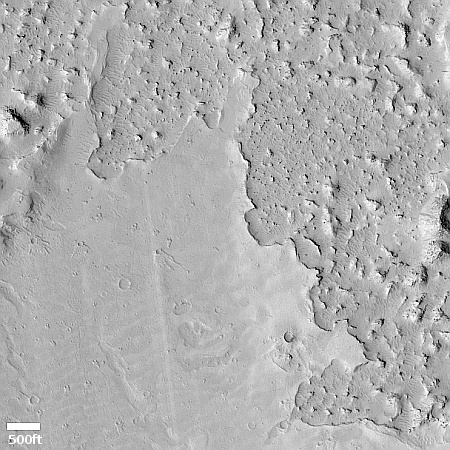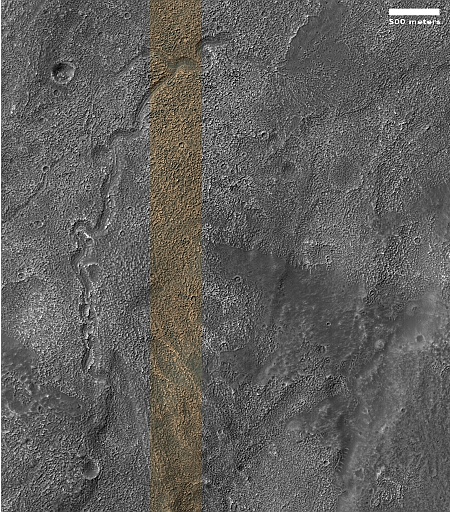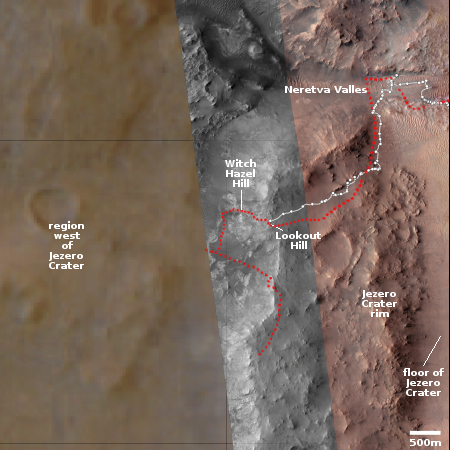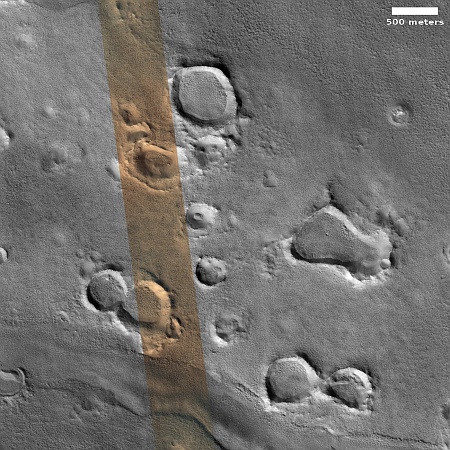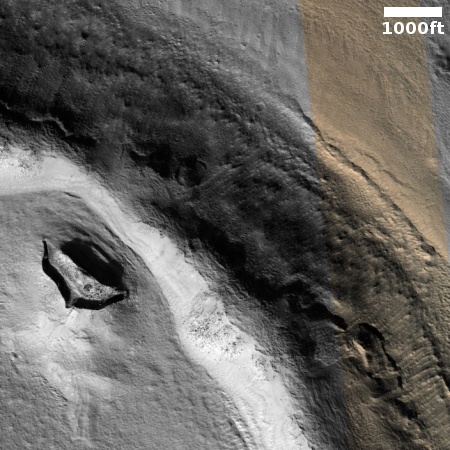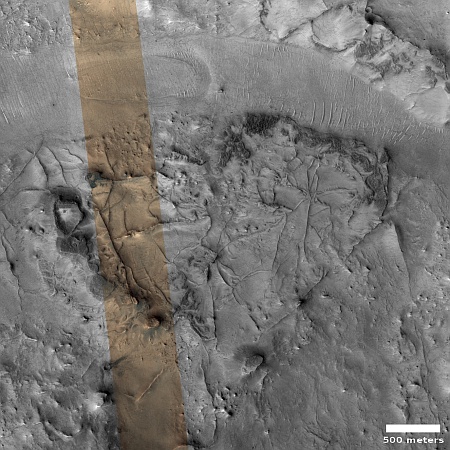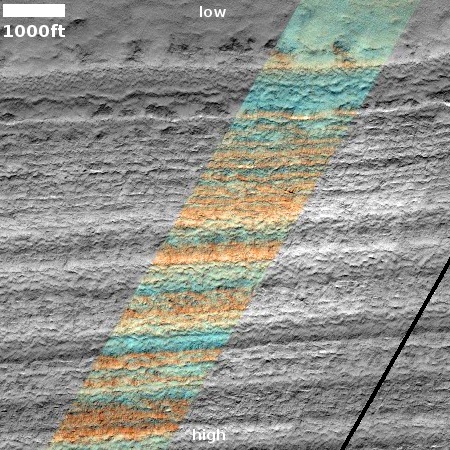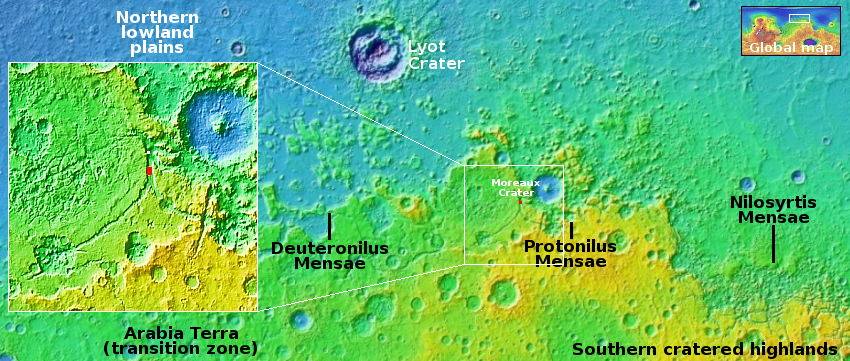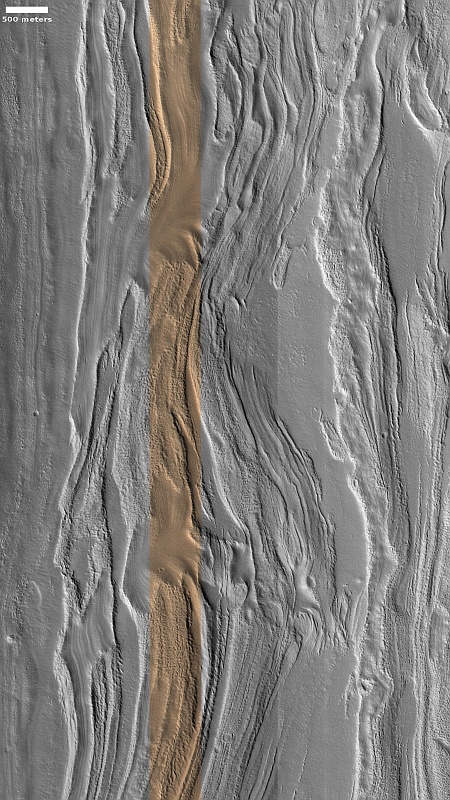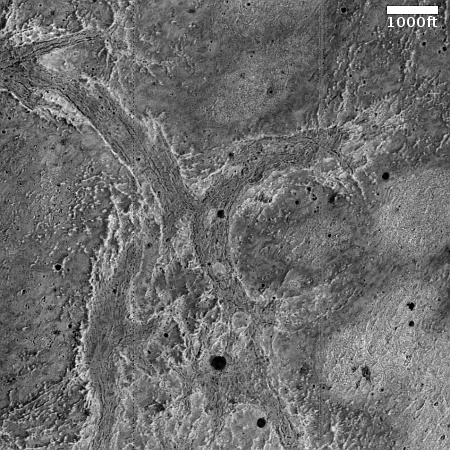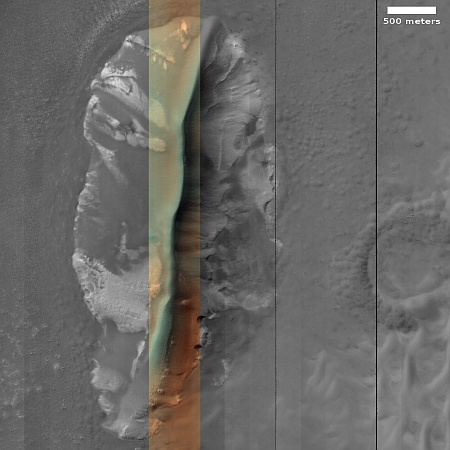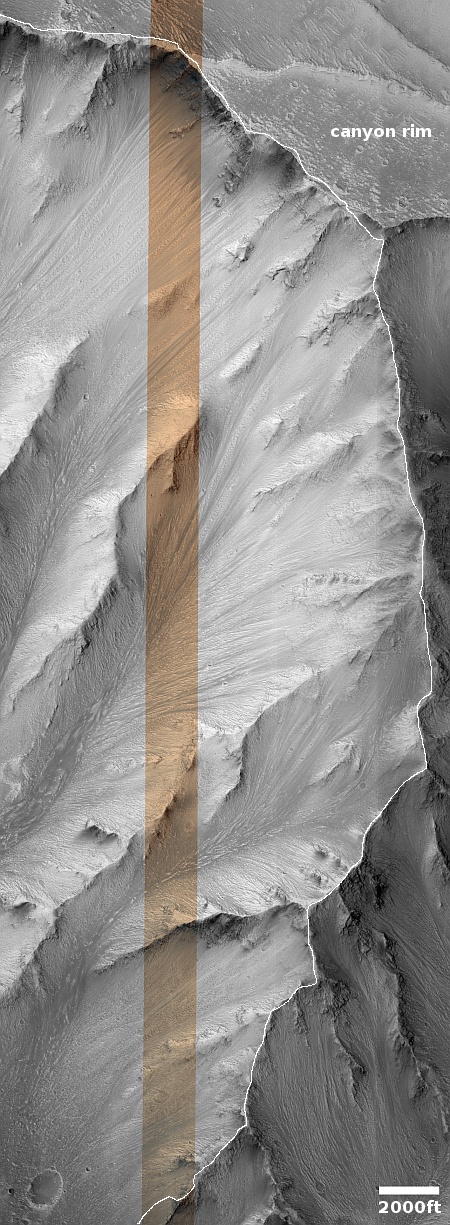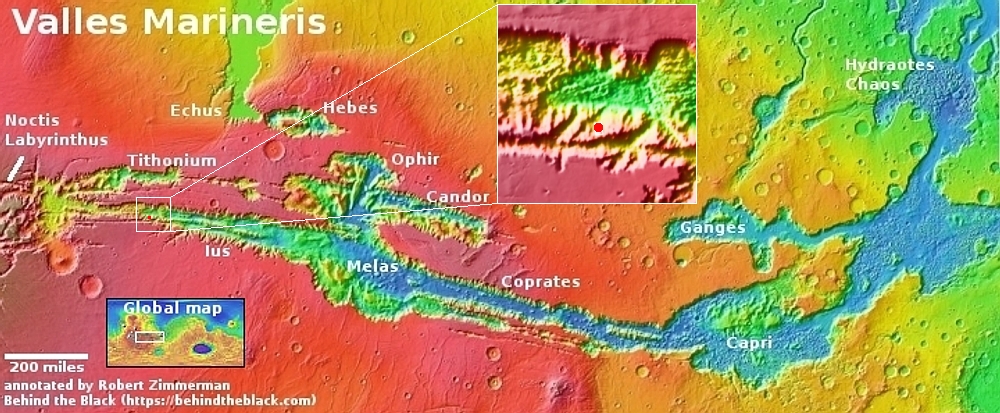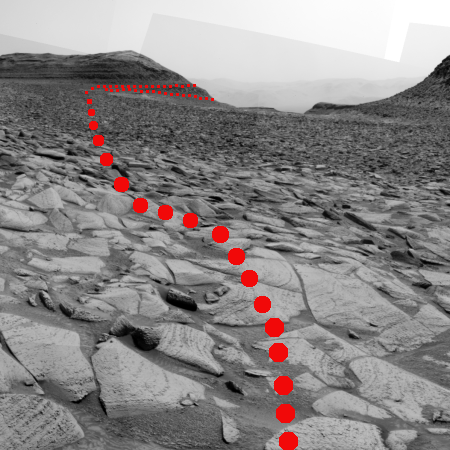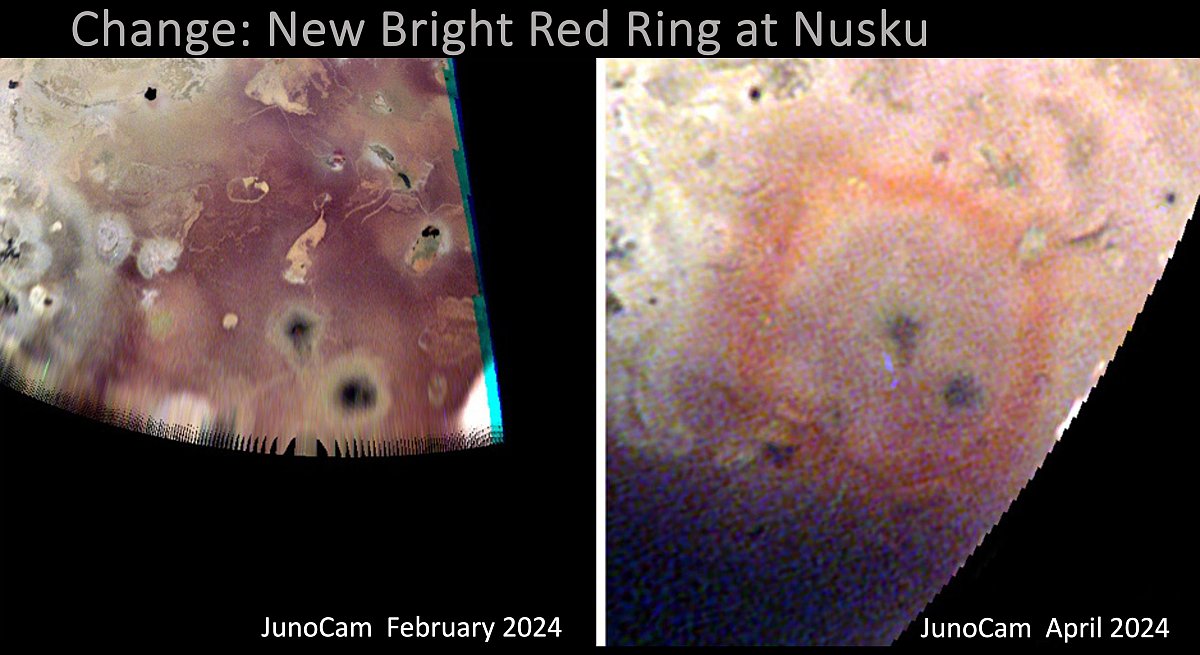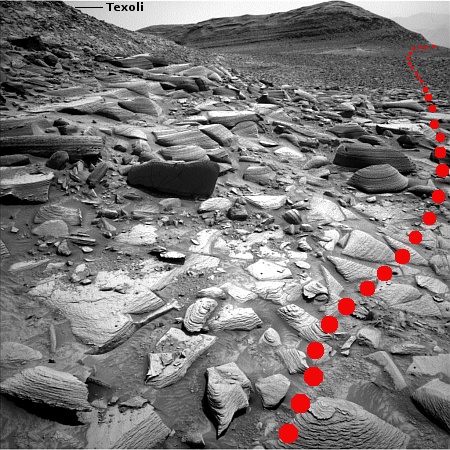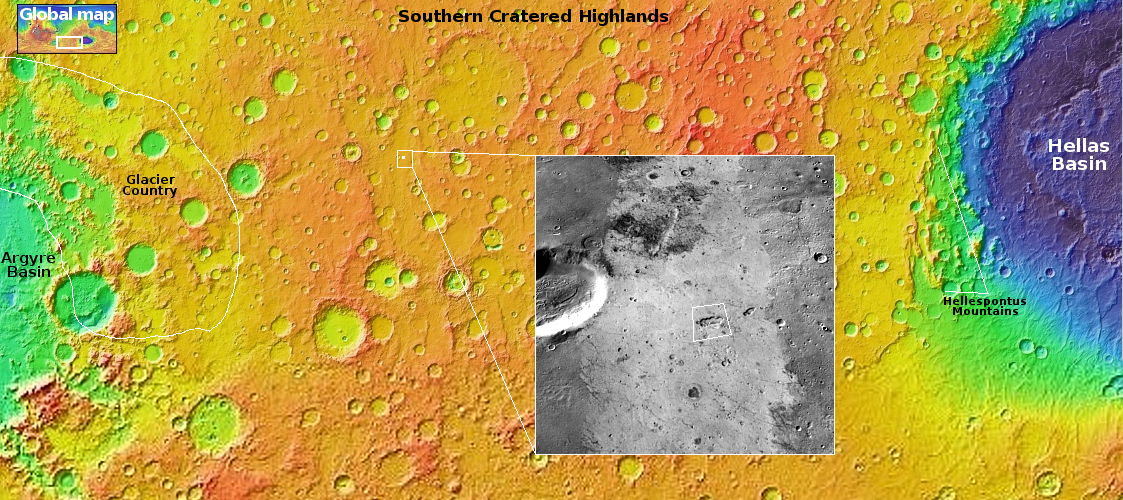Hardened dunes or eroded lava?
Cool image time! The picture to the right, cropped, reduced, and sharpened to post here, was taken on August 4, 2024 by the high resolution camera on Mars Reconnaissance Orbiter (MRO). It is labeled as a “terrain sample,” so it likely was taken not as part of any specific research project but to fill a gap in the schedule in order to maintain the camera’s proper temperature.
The picture shows a flat rippled plain with a handful of very small thin ridges, oriented 90 degrees from the smaller ripples and sticking up a few feet above them.
The rough surface of the small ripples suggest these are dunes of sand that have hardened into rock. The thin larger ridges suggest an underlying topography buried by the sand. The dunes however might not be dunes at all, as indicated by their location.
» Read more
Cool image time! The picture to the right, cropped, reduced, and sharpened to post here, was taken on August 4, 2024 by the high resolution camera on Mars Reconnaissance Orbiter (MRO). It is labeled as a “terrain sample,” so it likely was taken not as part of any specific research project but to fill a gap in the schedule in order to maintain the camera’s proper temperature.
The picture shows a flat rippled plain with a handful of very small thin ridges, oriented 90 degrees from the smaller ripples and sticking up a few feet above them.
The rough surface of the small ripples suggest these are dunes of sand that have hardened into rock. The thin larger ridges suggest an underlying topography buried by the sand. The dunes however might not be dunes at all, as indicated by their location.
» Read more

